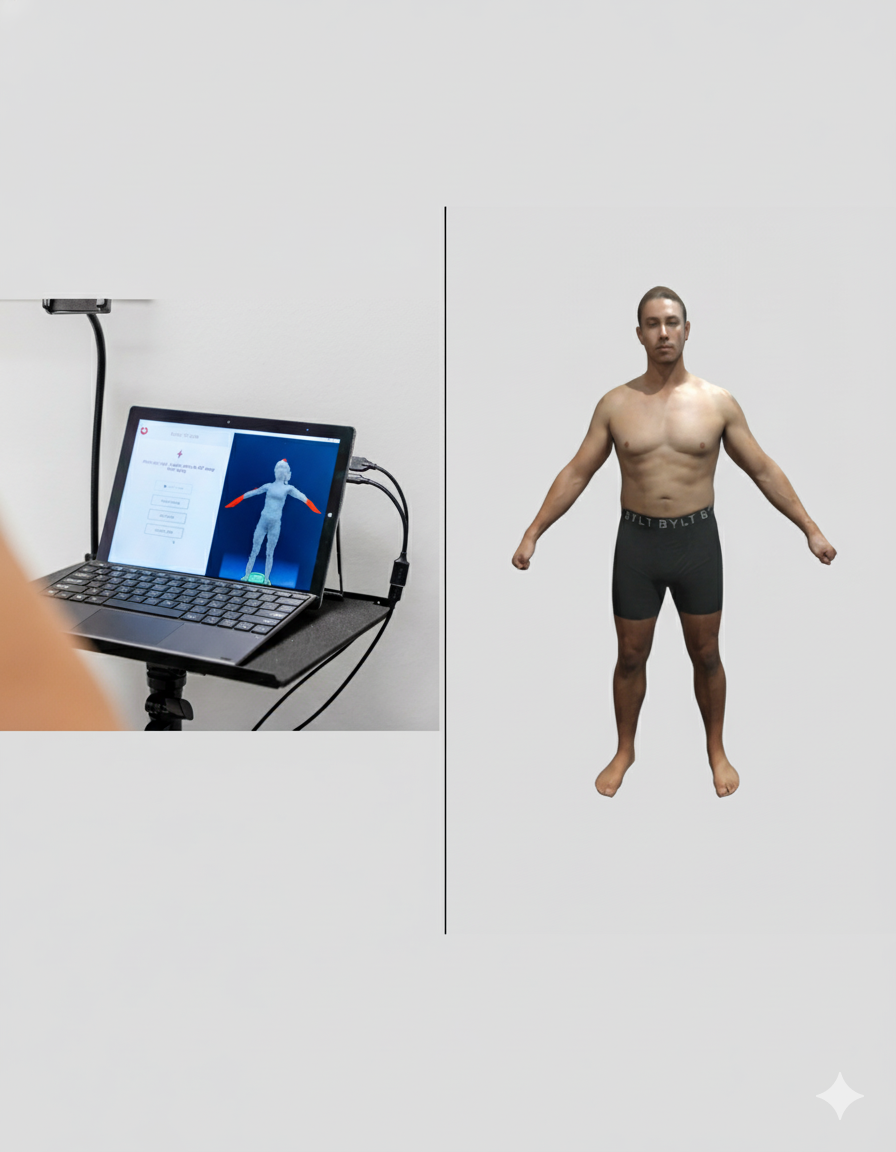
Building Muscle in a Caloric Deficit: What You Need to Know
When it comes to fitness, one of the most common goals is to lose fat and build muscle at the same time. But is it possible to build muscle while in a caloric deficit? The short answer is yes, but it’s not as straightforward as it might seem. Let’s explore how your body builds muscle when you're eating fewer calories than you burn, and how tools like 3D body scanscan help track your progress.
Muscle Building: The Role of Protein in a Caloric Deficit
To understand how muscle is built during fat loss, we need to break down two key processes: Muscle Protein Synthesis (MPS) and Muscle Protein Breakdown (MPB). For muscle growth to occur, MPS must exceed MPB. This means your body needs the right building blocks, specifically protein, to repair and grow muscle fibers after a workout.
In a caloric surplus (when you eat more calories than you burn), your body has plenty of energy to devote to muscle building. In a caloric deficit, however, your body’s energy is limited, and it may prioritize essential functions over muscle growth. Without enough protein, your body could start breaking down muscle for energy, which is why adequate protein intake is crucial when you're dieting.
How much protein is enough? To protect muscle mass during fat loss, you should aim for about 1.6 to 2.2 grams of protein per kilogram of body weight each day. Protein-rich foods like lean meats, fish, eggs, and plant-based sources such as legumes and tofu should be staples in your diet. Spread your intake throughout the day to optimize muscle repair and growth.
Training for Muscle Retention: Resistance Training
Caloric deficits make muscle building more challenging, but resistance training is essential to stimulate muscle growth, even when calories are restricted. Strength training causes micro-damage to muscle fibers, which your body repairs through Muscle Protein Synthesis. This process is what leads to muscle growth.
When you're lifting weights or performing bodyweight exercises, your body adapts by retaining or building muscle, even in a calorie-restricted state. Progressive overload, where you gradually increase the weights you lift or the volume of your workouts, is crucial to ensuring your muscles are consistently challenged.
Fat as Fuel: Prioritizing Stored Energy
In a well-managed calorie deficit, your body can tap into stored fat for energy while protecting muscle mass, especially when paired with strength training. This is where proper nutrient partitioning—directing the calories you consume toward muscle repair instead of fat storage—becomes important.
Track Your Progress with 3D Scans
Building muscle in a caloric deficit can be slow and hard to measure with traditional scales. A 3D body scan can give you a more comprehensive view of your progress by tracking changes in body morphology. Fit3D scans allow you to measure fat loss, muscle growth, and overall body composition in fine detail. By comparing scans over time, you can track changes in your body shape that might not be visible on a scale, giving you valuable insight into how your diet and exercise routine are impacting your muscle retention and fat loss.
Challenges of Building Muscle While Losing Fat
When you're trying to lose fat and build muscle simultaneously, several challenges arise:
- Recovery: Muscle recovery may take longer due to limited energy availability.
- Hormonal Changes: Prolonged caloric deficits can lower hormones that support muscle growth, like testosterone and IGF-1, while increasing cortisol, which can promote muscle breakdown.
- Reduced Energy: Training performance may decline due to fewer available calories, making it harder to lift as heavy or complete intense workouts.
Despite these challenges, it's still possible to preserve and even build muscle, especially if you're new to strength training or have a higher body fat percentage.
Optimizing Muscle Building in a Deficit
To get the best results while in a caloric deficit, focus on the following:
- Prioritize Protein: Aim for 1.6-2.2 grams of protein per kilogram of body weight daily.
- Strength Train Regularly: Engage in resistance training with progressive overload to stimulate muscle growth.
- Fuel Workouts with Carbs: Maintain an adequate amount of carbohydrates to fuel intense workouts and recovery.
- Use Nutrient Timing: Spread protein intake throughout the day and consume a post-workout meal rich in protein to enhance recovery.
- Monitor with 3D Body Scans: Use Fit3D scans to track your body composition changes and stay motivated as you see your progress beyond the numbers on a scale.
Consult a Coach or Nutritionist
Understanding the overlap between your training routine and meal plan is crucial to achieving your goals. Consulting a fitness coach or nutritionist can help you design a personalized program that aligns your caloric intake, protein needs, and training regimen to maximize muscle retention and fat loss. They can also guide you on adjusting your diet and workout intensity as your body changes.
Conclusion: The Key to Muscle Building in a Deficit
Building muscle while in a caloric deficit is possible, but it requires careful planning. Prioritize protein intake, stick to a solid resistance training routine, and track your progress with Fit3D scans to stay on the right path. Whether you're aiming to lose fat, build muscle, or both, the right approach to nutrition and exercise can help you reach your goals.
Ready to track your progress more effectively? Schedule a Fit3D scan and see how your body is evolving on your fitness journey.








